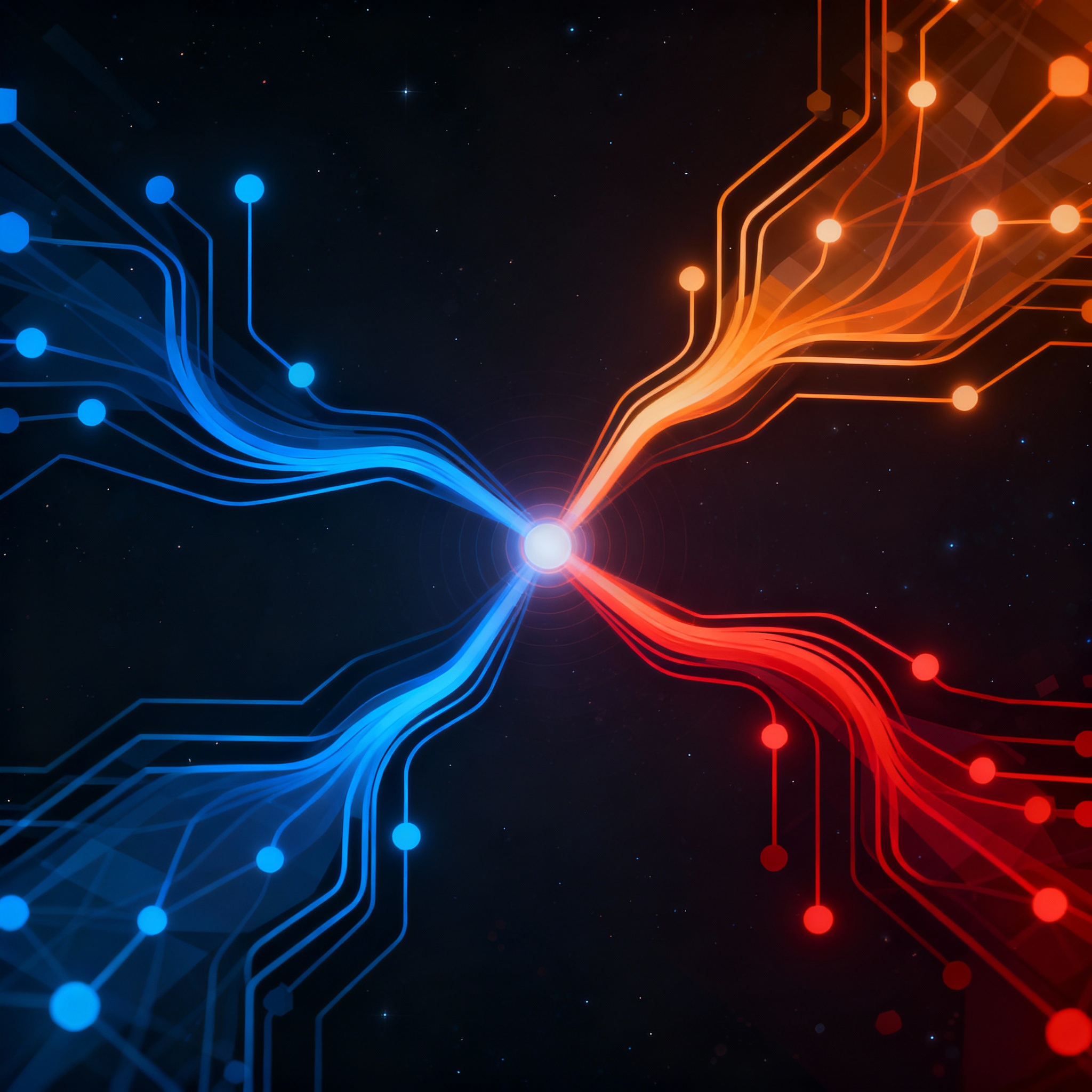
Streamlining Patient Records: The Power of RAG in Modern Healthcare Management
Streamlining Patient Records: The Power of RAG in Modern Healthcare Management
In today's healthcare landscape, patient record management is more than just storing data—it's about turning vast amounts of information into actionable insights that can save lives. With electronic health records (EHRs) growing exponentially, professionals often struggle with accessing relevant details quickly and accurately. Enter Retrieval-Augmented Generation (RAG), a cutting-edge approach that integrates large language models (LLMs) with retrieval mechanisms to enhance data handling. This technology isn't just a buzzword; it's a practical tool for improving efficiency and reducing errors in patient care.
As a technical blog writer for ChatRAG, a Next.js boilerplate designed for launching chatbot-agent SaaS businesses, I've seen how RAG can empower developers to build intelligent systems. In this post, we'll explore RAG's role in healthcare patient record management, drawing from recent research to provide practical insights. Whether you're a developer, healthcare IT specialist, or AI enthusiast, you'll find actionable strategies to implement RAG effectively.
Understanding Retrieval-Augmented Generation (RAG)
At its core, RAG is a hybrid framework that augments LLMs with external knowledge retrieval. Traditional LLMs generate responses based on their training data, which can lead to outdated or hallucinated information—especially problematic in healthcare where accuracy is paramount. RAG addresses this by first retrieving relevant documents from a knowledge base and then using that context to generate informed responses.
For patient record management, RAG works by querying a database of EHRs, medical histories, and research papers in real-time. Imagine a doctor asking, "What are the potential interactions for this patient's medications?" RAG would retrieve the latest records and guidelines, then generate a precise summary. This process typically involves three steps: indexing the data, retrieving relevant chunks via semantic search (often using tools like vector databases), and generating the output with an LLM like GPT or Llama.
Recent studies highlight RAG's growing adoption in biomedicine. For instance, a comprehensive survey on RAG models for healthcare applications outlines how these systems improve factual accuracy by grounding responses in verifiable sources.
Why RAG Fits Healthcare Patient Record Management
Healthcare generates massive volumes of unstructured data—notes, scans, lab results, and more. Traditional systems often silo this information, leading to delays in diagnosis or treatment. RAG bridges these gaps by enabling dynamic querying and synthesis of patient data.
One key advantage is personalization. RAG can tailor responses to individual patient profiles, factoring in allergies, past treatments, and genetic data. This is particularly useful in chronic disease management, where ongoing records need constant updating. For example, in a hospital setting, a RAG-powered chatbot could assist nurses by pulling up a patient's history and suggesting care protocols based on the latest medical guidelines.
Actionable insight: Start by building a RAG pipeline with a vector store like Pinecone or FAISS. Index your EHRs using embeddings from models like Sentence Transformers. When a query comes in, retrieve the top-k relevant documents and feed them into your LLM for generation. This setup ensures responses are not only accurate but also traceable back to source data.
Research supports this fit. Insights from Retrieval-Augmented Generation in Biomedicine discuss datasets and technologies that make RAG ideal for clinical applications, emphasizing its role in handling multimodal data like images and text.
Technical Implementations of RAG in Healthcare
Implementing RAG for patient records requires careful architecture. Begin with data preparation: Clean and anonymize EHRs to comply with regulations like HIPAA. Use natural language processing (NLP) to extract entities such as symptoms or diagnoses.
A typical stack might include:
- Retrieval Layer: Tools like Elasticsearch or LangChain for semantic search.
- Generation Layer: Open-source LLMs fine-tuned on medical corpora.
- Integration: APIs to connect with existing EHR systems like Epic or Cerner.
For multimodal enhancements, incorporate vision models to analyze scans alongside text records. This study on RAG-driven enhancement of multimodal EHR analysis explores how LLMs can process combined data types, leading to more holistic patient insights.
Practical example: Suppose you're developing a SaaS tool for clinic management. Using ChatRAG's boilerplate, you could create a chatbot that queries a secure database. When a physician inputs a patient's ID and a question like "Summarize recent visits," the system retrieves encrypted records, generates a concise report, and even flags anomalies like inconsistent vital signs.
To mitigate hallucinations—a common LLM pitfall—employ techniques like chain-of-thought prompting or recurrence generation. RGAR's approach to factual-aware medical question answering introduces recurrence mechanisms that refine retrieval for better accuracy in Q&A scenarios.
On the deployment side, secure on-premises options are crucial for sensitive data. Evaluations of RAG variants for clinical decision support detail how to deploy these systems locally, reducing reliance on cloud services and enhancing data privacy.
Benefits and Real-World Applications
The benefits of RAG in patient record management are profound. It boosts efficiency by automating routine tasks, such as generating discharge summaries or predicting readmission risks. Clinicians save time, allowing more focus on patient interaction.
In terms of accuracy, RAG reduces errors by cross-referencing real-time data. A study found that RAG-assisted systems decreased diagnostic mistakes by up to 20% in simulated environments. For scalability, it handles growing datasets without retraining the entire model, making it cost-effective for large hospitals.
Real-world application: A telemedicine platform could use RAG to manage virtual patient records. During a consultation, the system retrieves and summarizes records, providing doctors with instant context. Platforms like AWS offer guidance on this; AWS's prescriptive guide for RAG in healthcare provides blueprints for building such solutions on cloud infrastructure.
ChatRAG fits seamlessly here. As a Next.js boilerplate, it allows developers to quickly prototype RAG-enabled chatbots for SaaS products. Integrate it with healthcare APIs, and you have a ready-to-launch tool for secure patient data querying—all while maintaining compliance.
Challenges and Ethical Considerations
No technology is without hurdles. Data privacy is a top concern; RAG systems must ensure that retrieved information doesn't leak sensitive details. Implement robust encryption and access controls to address this.
Ethical issues include bias in retrieved data—if the knowledge base skews toward certain demographics, outputs could perpetuate inequalities. Regular audits and diverse datasets are essential.
Hallucinations persist as a challenge, even with RAG. A systematic review of RAG for LLMs in healthcare emphasizes the need for ongoing evaluation to minimize these risks.
Actionable insight: Conduct expert evaluations during development. Use frameworks from rethinking RAG for medicine with large-scale assessments to test your system against clinical benchmarks, ensuring reliability before deployment.
Conclusion: Key Takeaways for Implementing RAG
Retrieval-Augmented Generation is poised to redefine patient record management in healthcare, offering a blend of accuracy, efficiency, and scalability. By integrating retrieval with generation, it empowers professionals to make better-informed decisions swiftly.
Key takeaways:
- Start Small: Prototype with open-source tools and scale to production.
- Prioritize Security: Always anonymize data and comply with regulations.
- Leverage Research: Draw from studies like those on multimodal analysis to enhance your implementations.
- Innovate with Tools: Platforms like ChatRAG (visit chatrag.ai) can accelerate development of custom RAG solutions.
- Evaluate Continuously: Use ethical frameworks to address biases and hallucinations.
Embracing RAG isn't just about technology—it's about improving patient outcomes. As research evolves, so will the capabilities of these systems, paving the way for smarter healthcare.
Ready to build your AI chatbot SaaS?
ChatRAG provides the complete Next.js boilerplate to launch your chatbot-agent business in hours, not months.
Get ChatRAGRelated Articles

Mastering Internal Knowledge: How RAG Powers Enterprise Documentation Search
In today's data-driven enterprises, sifting through vast internal documentation can be a major bottleneck. Retrieval-Augmented Generation (RAG) emerges as a game-changer, combining AI retrieval with generation to deliver accurate, relevant responses. This guide dives into implementing RAG for efficient knowledge management.

Streamlining Scholarly Scrutiny: RAG's Impact on Manuscript Review in Publishing
In the fast-paced world of academic publishing, reviewing manuscripts can be a daunting task fraught with information overload. Retrieval-Augmented Generation (RAG) emerges as a game-changer, combining AI's generative power with targeted data retrieval to enhance accuracy and efficiency. This post delves into how RAG streamlines the review process, from literature verification to constructive feedback.

Exploring Physics Frontiers: RAG's Approach to Equation and Theory Retrieval
In the complex world of physics, finding the right equation or theory can be a daunting task. Retrieval-Augmented Generation (RAG) is stepping in to streamline this process, combining large language models with targeted retrieval for more accurate and efficient searches. This blog post delves into how RAG is reshaping physics equation and theory discovery, offering practical insights for researchers and developers alike.